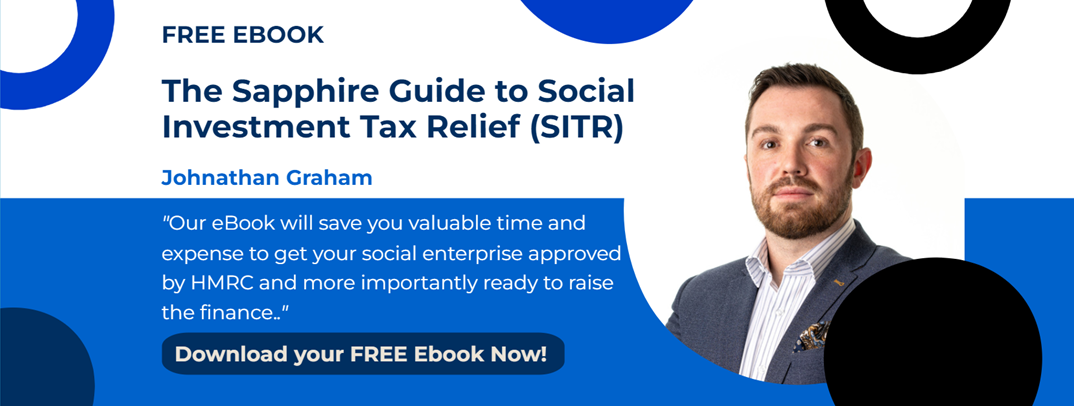 In today’s society there are many of us who want to make a difference, either through volunteering or investing in causes in which we believe in. This is true of individuals as well as small businesses and corporates. At Sapphire Capital Limited we are often asked for advice on how individuals and businesses can become involved in the social sector to both the investors and the social enterprise’s benefit.
In today’s society there are many of us who want to make a difference, either through volunteering or investing in causes in which we believe in. This is true of individuals as well as small businesses and corporates. At Sapphire Capital Limited we are often asked for advice on how individuals and businesses can become involved in the social sector to both the investors and the social enterprise’s benefit.
There are a number of ways in which you can get involved:
Gift Aid
The easiest way is to make any donation through the Gift Aid scheme. With this method the charity or community group can claim an extra 25p for every £1 you donate. A form must be completed by you to allow the additional monies to be claimed.
If you are a higher rate taxpayer you can claim the difference between the rate you pay and basic rate on your donation.
Example: You donate £100 to charity, and the donor can claim Gift Aid of £25, making the full contribution £125. You pay 40% tax so you can personally claim back £25.00, this is £125 x 20%.
Social Investment Tax relief (SITR)
If you invest in a social enterprise, either through the purchase of shares or by way of a loan to the enterprise, then you may qualify for SITR. The tax benefits from a qualifying SITR investment are attractive, being:
- 30% Income Tax Relief on a maximum investment of £1m,
- Capital Gains deferral relief, if reinvesting in a qualifying SITR,
- Capital Gains disposal relief.
The relief is given by way of a reduction of tax liability, so you must be a UK tax payer and have a tax liability to set the relief against. A claim for SITR can be made up to five years after the end of January following the tax year in which your investment was made.
So that means for every £10,000 invested in a qualifying SITR enterprise, you can claim up to £3,000 relief, so long as you have sufficient tax liability to offset against.
Social Impact Bonds (SIB)
A SIB is a more structured method of investment, with investors paying for the project at its inception and receiving payments based on predefined results. There has to be a formal process, outlining the social area targeted, and the aim of the project.
Because results are agreed at the contract stage they are measurable throughout the project. Financial return is therefore based on output rather than on the process, so there is greater flexibility for innovation and increased freedom to implement solutions that work.
The key point to note is that reward to investors will only be made if and when the results are achieved. /blog/the-benefits-of-social-impact-bonds
It is obvious that social investing is not all about financial return, most investors want to make sure that their money is furthering a worthwhile social cause.
Let’s look at a practical example of how an investor could use SITR and Gift Aid to further the aims of a local charity.
- John is a 40% taxpayer, and he invests £100,000 to a local cancer charity, by way of a loan, agreeing a return of 10% per annum, and with all capital being repayable at the end of a three year period. With 30% tax relief he is eligible to claim £30,000 in under the SITR Scheme.
- John then gives £50,000 to the charity under Gift Aid and can claim £12,500 in higher rate tax relief, whilst the charity receives a further £12,500.
- Over the next three years, John receives £30,000 in interest on his loan at £10,000 per year as agreed.
So in summary, John has put in £150,000 into the charity and has received back £172,500 (£100,000 loan capital, £30,000 in interest, £30,000 in SITR, and £12,500 Gift Aid relief), giving him a 14.7% return on his investment.
The charity has received £150,000, and has repaid £130,000 being the repayment of the loan plus interest. The charity therefore has not only benefited by £20,000, but has in effect had free use of the funds for three years.
I think you'll agree, good news for both the investor and the charity!
If you are interested in investing, or attracting investment into your organisation, and would like our help please contact us at Sapphire Capital Partners LLP. We are happy to help.

